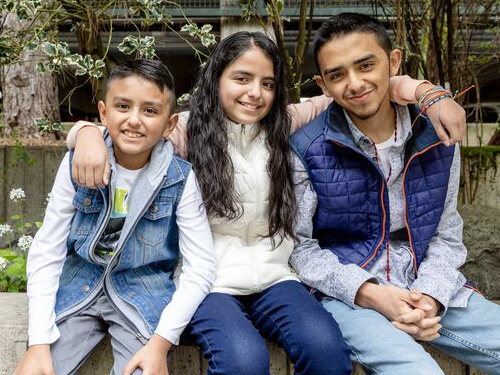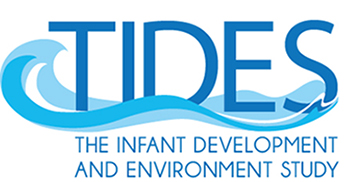The Infant Development and Environment Study (TIDES)
About TIDES
 The Infant Development and Environment Study (TIDES) is a multi-center pregnancy cohort that focuses on the impact of environmental exposures during pregnancy on child health and development.
The Infant Development and Environment Study (TIDES) is a multi-center pregnancy cohort that focuses on the impact of environmental exposures during pregnancy on child health and development.
The study takes place at four centers:
- University of California, San Francisco
- University of Minnesota
- University of Rochester Medical Center
- Seattle Children’s Hospital/University of Washington
Seattle Children’s Research Institute serves as the TIDES Data Coordinating Center (formerly the Icahn School of Medicine at Mount Sinai).
TIDES I
2009-2014
From 2009 to 2014, TIDES recruited pregnant women to investigate the association between phthalate exposures in pregnancy and reproductive outcomes in children. Almost 800 mothers enrolled in TIDES across the four study sites. During this phase, participants completed study visits during each trimester, a birth exam and a 12-month follow up visit (males only).
Results from the first phase of the study indicated that exposure to phthalates in our diet and homes during pregnancy may affect reproductive tract development in boys but not in girls. These results were affected by the amount of stress that the mother reported during pregnancy. We also found that women’s attitudes about phthalates and other environmental chemicals vary widely and can influence their consumer choices and the amount of these chemicals to which they are exposed.
TIDES II
2016-2020
The second phase (TIDES II) examined effects of phthalates and stress on early life growth and neurodevelopment and included visits at age 4 and age 6.
In TIDES II, we observed that exposure to prenatal phthalate mixtures were associated with small changes in autistic-like behaviors and increased externalizing behaviors in early childhood. We are currently examining how stressful life events in pregnancy could impact the relationship between phthalate exposures in pregnancy and child health at age 4 and 6.
TIDES ECHO
 TIDES is now part of a nationwide research program called the Environmental Influences on Child Health Outcomes Program (ECHO), whose mission is to improve health for generations to come. Supported by the National Institutes of Health, the ECHO program includes over 70 cohorts like TIDES. ECHO expects to include nearly 50,000 children and families from 44 states to address five important child health issues: asthma, neurodevelopment, obesity, airway health and birth outcomes. Visit the ECHO website for more information. See how participants contribute to ECHO science on this web page and video summary.
TIDES is now part of a nationwide research program called the Environmental Influences on Child Health Outcomes Program (ECHO), whose mission is to improve health for generations to come. Supported by the National Institutes of Health, the ECHO program includes over 70 cohorts like TIDES. ECHO expects to include nearly 50,000 children and families from 44 states to address five important child health issues: asthma, neurodevelopment, obesity, airway health and birth outcomes. Visit the ECHO website for more information. See how participants contribute to ECHO science on this web page and video summary.
TIDES III
2022-2027
Participants aged 12 and 14 are currently undergoing study visits to explore how exposure to environmental chemicals, such as phthalates and bisphenols, affect adolescent airway health. This phase also involves analyzing urine, saliva, and blood samples from these participants to measure various sex hormones and understand their relationship with airway health in adolescents.

